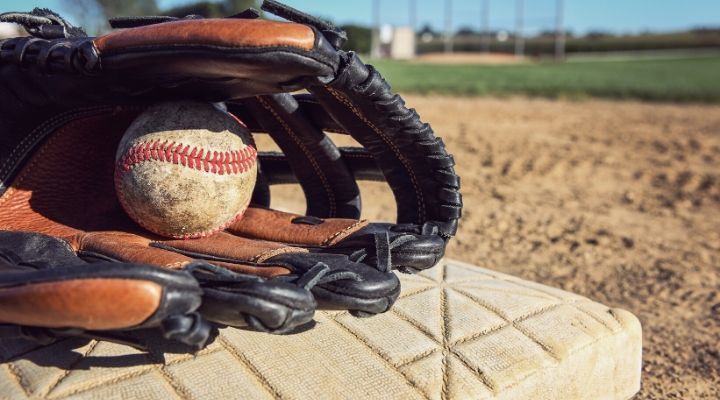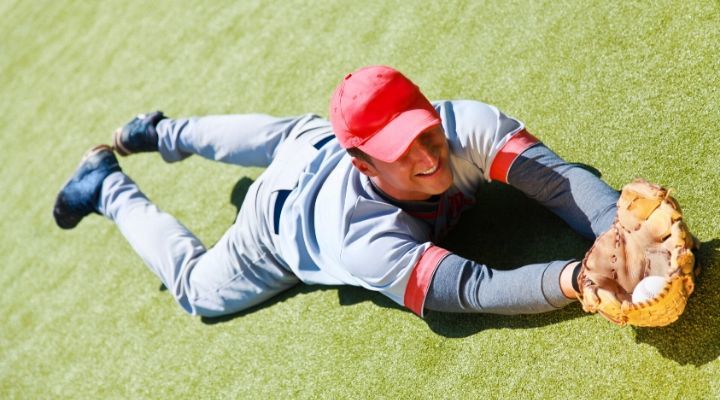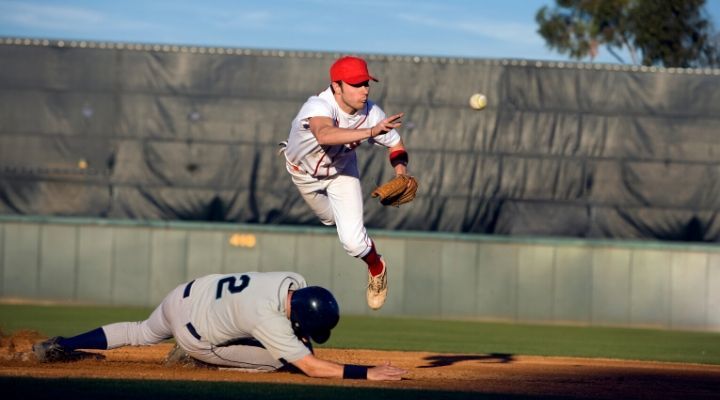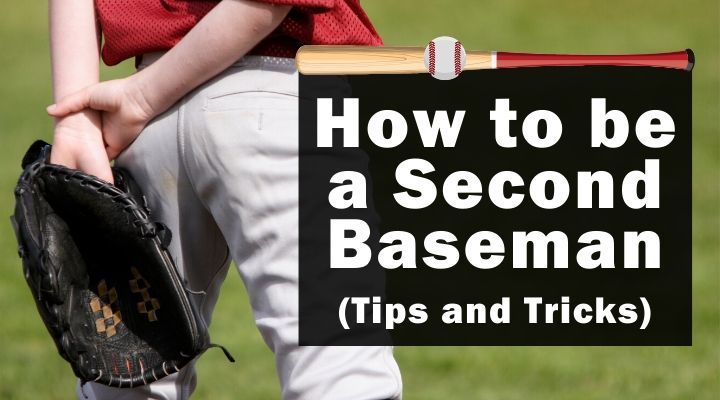The second baseman is often called the Keystone for good reason.
Runners who reach second base are considered to be in scoring position, making it ideal for the fielding team to prevent runners from getting that far.
Also, because second base is considered an "up the middle" position, it’s considered to be one of the more important positions on the field.
A second baseman often doesn’t get the attention they deserve in terms of being an important position, at least from those who aren't experts in the game.
When most people think of those positions, it's often pitcher, catcher, shortstop, and center fielder. Second base often gets left off the list of most attractive positions.
Some may even think that second base is easy to play, and it's where teams put infielders who aren't good enough to play shortstop.
But that's simply not true.
Second base is not only one of the most important positions on the field, but it's also one of the most demanding.
It’s not an easy position to master. There's a lot of ground to cover.
Plus, the position naturally takes right-handed throwers and faces them away from first base, making throws to that base much tougher than at other positions.
Let's take a closer look at some of the traits, roles, and responsibilities of a second baseman and some tips on how you can start to learn the position.

5 Traits of a Great Second Baseman
1. Second Basemen Have Great Footwork
Second basemen are constantly on the move.
When there are no runners on base, they're shifting the weight on their body and getting in the right position so they can pounce on a hard-hit ground ball their way.
When there's a runner on first, they have to constantly be monitoring them to see if there's a stolen base attempt where they'd need to cover second base.
On force plays at second, they must be able to quickly get to the bag and receive the throw without stumbling over the bag or missing it altogether.
And when there's a double play in order, they must not only receive the initial throw to second base but pivot and throw to first base -- all while avoiding what could be an oncoming runner who's sliding to break up the play.
2. Second Basemen Have Good Vision
Second basemen must be constantly monitoring the field around them, especially when there are runners on base.
That's because second basemen have additional responsibilities than just covering their position.
If a runner is on first base, he must constantly be peering out of his peripheral vision to see if he's going to take off on a stolen base attempt.
If a runner is on second base, he must constantly be peering out of his peripheral vision to see if he needs to cover second base on a pick-off attempt and recognize whether the pitcher is going to throw there or to home.
3. Second Basemen Are Gritty
Second base is a position that requires some grit.
In order to play it successfully, you need to not be afraid to get dirty.
The position may require you to dive or slide to stop a ground ball. You may be required to get on your knees and block a throw to second base if it's off-line.
You also may be forced to absorb contact with a runner who's either trying to get to second base or return to it.
Second base is the bag that runners try to steal most often, and it's also the bag where the most action surrounds on double-play opportunities.
These situations all put the second basemen in close contact with a runner who is moving at a high rate of speed and a ball traveling to the bag at a high rate of speed as well.
4. Second Basemen Have Strong Arms
It's true that the throw from second to first base isn't the longest throw on the diamond.
Therefore, you might not think it's important for a second baseman to have a strong throwing arm.
But that couldn't be further from the truth.
The fact is that many of the throws a second baseman makes will require superior arm strength.
When he must go to his right to snag a groundball, there are times when he'll need to either throw to first base on the run or off balance.
The only way for the ball to get to first with enough velocity is if he has great upper body strength.
Likewise, a throw from second base when trying to turn a double play requires a second baseman to sometimes throw without a full step with the front foot.
He may even have to throw while leaping in the air over a runner who's sliding his way.
Finally, second basemen serve as primary cut-off targets for right fielders for plays at second base and third base.
Throws to third base in these situations can be especially long, and there's no way he can reach the bag with a throw of that length without a strong arm.
5. Second Basemen Have Good Hands
Not surprisingly, it takes a solid set of hands to play second base well.
Not only must they be able to stab ground balls and line drives out of the air or off the ground while on the run, but they must have great handwork in shift the ball from the glove to the hand and into a throw in one smooth motion.
This exchange from glove to throwing hand may seem like a simple thing to do, but second basemen must master it to cut down on the amount of time it takes for the ball to get from them to the end destination.
Even a half-second cut-off of this time can make a huge difference in the outcome of a play.
At the plate, second basemen are looked upon to be contributors mostly by making solid contact.
While there are certainly instances of some second basemen who were huge power hitters, most of even the best hitting second basemen hit more for a high average and solid contact.
They contribute offensively by getting on base and moving runners up a base.

Roles and Responsibilities
A second baseman has a wide range of roles and responsibilities.
Here are a few of them:
1. He Must Cover the Bag
Second base is, not ironically, the second baseman's domain.
He’s the primary player responsible for covering that bag, for accepting throws to it, for tagging runners out trying to get to it, and for keeping runners on second from straying off too far.
On ground balls to the other side of the infield, the second baseman is responsible for covering second base if there’s a runner at first base.
If there’s a runner on second base, his job is to keep faking as if he's covering the bag for a pick-off throw from the pitcher.
And when a right-handed hitter is at the plate, he’s responsible for covering second base in situations where a runner tries to steal the bag.
2. He Must Serve as a Cut-Off Man
The second baseman will serve as the cut-off man for balls hit to the right side of the outfield.
This requires the second baseman to quickly run into the outfield to catch an incoming throw from either the right or center fielder and then pivot and fire a strike to either second base or third base.
In these situations, the second baseman must align himself about halfway between where the outfielder fields the ball and the bag he’s going to throw to.
His job is to try to get in a straight line between the outfielder and the bag so that the outfielder doesn't have to attempt to throw it there in the air with no help.
3. He Must Keep the Ball in the Infield
On balls that are hit on the ground his way, the second baseman's primary job is to keep the ball from reaching the outfield.
Of course, the ideal outcome would be that the second baseman field the ball cleanly and then throw it to another bag to record a force out.
But that's not always possible.
Sometimes, a ball is hit so hard that it's very hard to do this.
In these cases, the second baseman must do all he can to keep the ball from reaching the outfield.
Whether this requires diving or sliding and just making contact with the ball, he must do what he can to keep the ball in front of him.
This will keep runners from advancing too many bases.
4. He Must Be Productive at the Plate
A second baseman won't often be counted on to be the focal point of an offense.
His goal every time he steps into the batters' box is to have a productive at-bat.
This could mean a number of things.
Obviously, it could mean reaching base successfully -- whether that be by getting a hit, drawing a walk or being hit by a pitch.
But he could also be productive even if he makes an out.
This includes dropping down a bunt that advances a runner another base.
It could mean hitting the ball on the ground to the right side of the field that allows a runner on second base to advance to third base.
Or, it could mean hitting a sacrifice fly to the outfield with less than two outs that scores a runner from third.

3 Tips for a Second Baseman
Here are some tips for players who want to be a good second baseman:
1. Improve Your Footwork
You have to have quick feet to be a good second baseman, so it's important that you work on your footwork.
You can do this by running shuffling drills by shifting your weight back and forth as you move to your left and to your right.
You can also tap your toes on the ground as you shuffle your feet and body through cones set up on a field.
You also want to work on your footwork around second base.
Work on maneuvering on the back and front side of the bag and catching throws then pivoting to throw to first base.
This will all be important if you want to avoid injury while receiving and making throws.
2. Strengthen Your Upper Body
It's important for second basemen to hit the weight room hard and strengthen that upper body.
It's extremely important to have a strong arm that can not only throw with velocity but can throw long distances.
This is important for those short throws to first and those much longer throws to third as a cut-off man.
Simple weight training will help you out here, as will work with strengthening armbands.
In addition, you'll want to stretch your throwing arm out by playing long toss quite often.
3. Watch Other Second Basemen
Second base is a complicated position to master, especially in terms of positioning on the field.
While you can listen to what coaches are telling you, and can get great experience by watching the game, perhaps the best way to learn is to watch how other successful second basemen play the game.
Pick out a favorite player of yours who plays the position in Major League Baseball and watch where he positions himself.
Make note of how he aligns himself on the field in all different situations of the game, and ask questions of a coach if you're unsure of why he's doing a certain thing.
Learning from those at the top of the sport can do wonders for helping your game as you're just learning the position.
Conclusion
Playing second base may look easy, but there's a lot that goes into it that can be hard to see at first.
It's called the Keystone position for a reason -- and it's because it's a key base in the game for the offense and defense alike.
Manning the bag can take a while to get used to.
But once you learn the skill it takes to succeed, it can be a great position to master.

